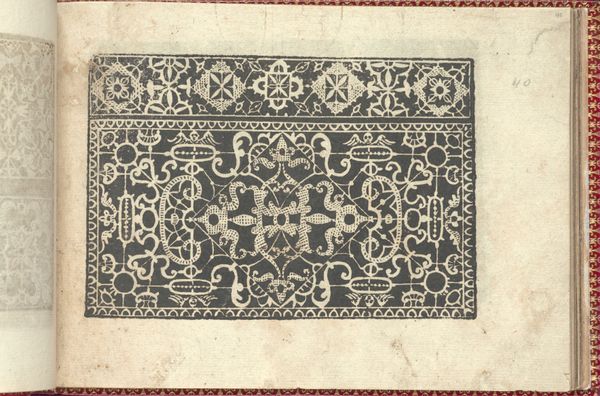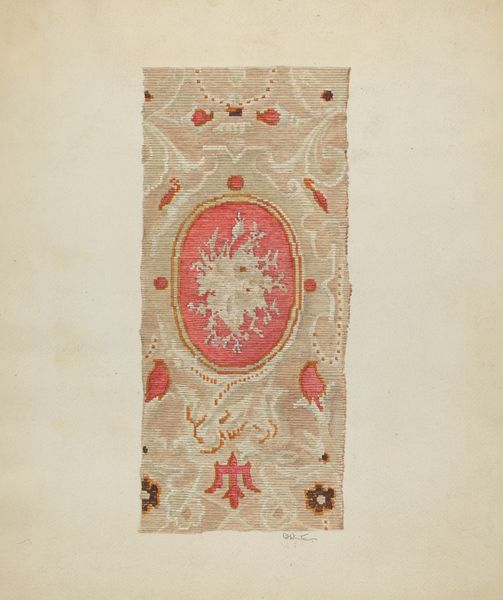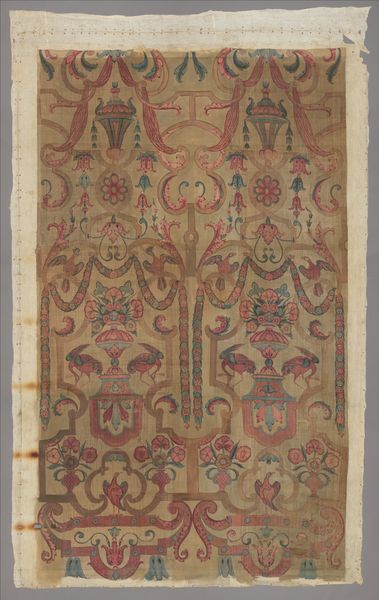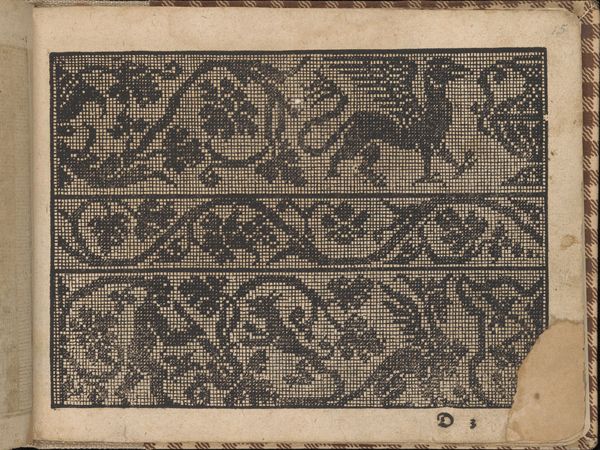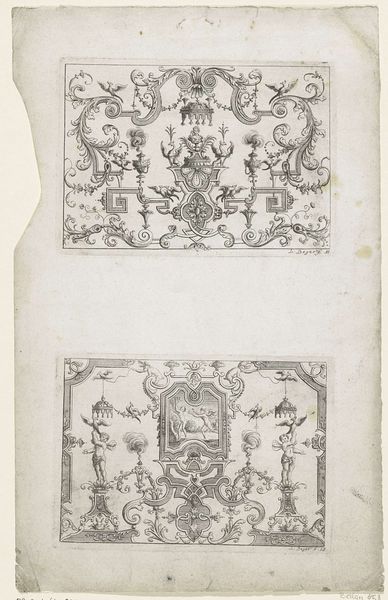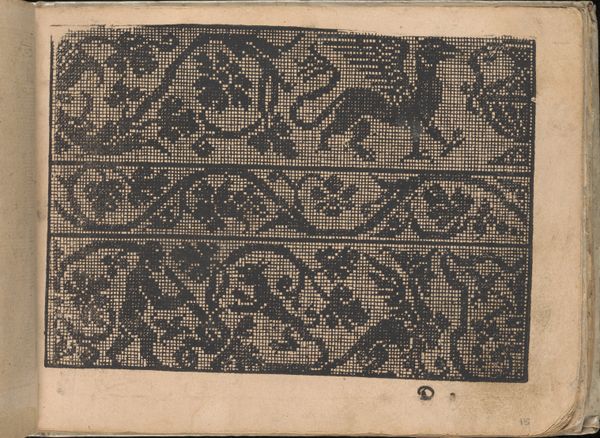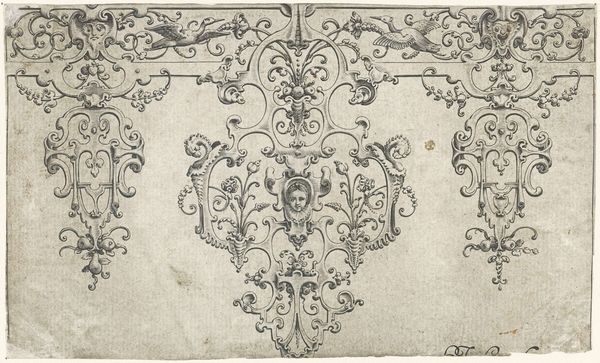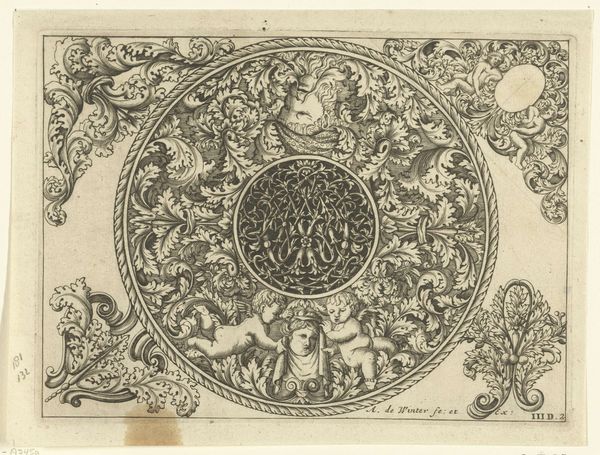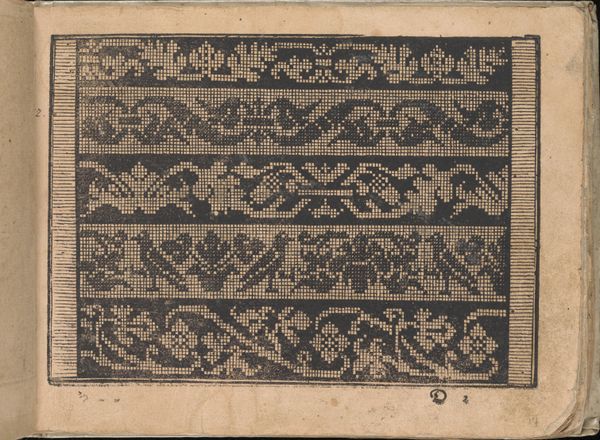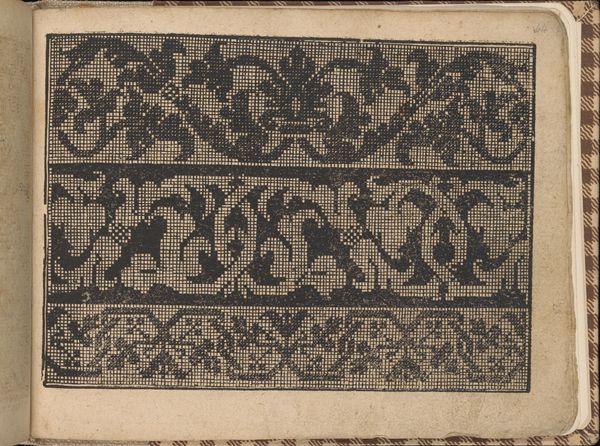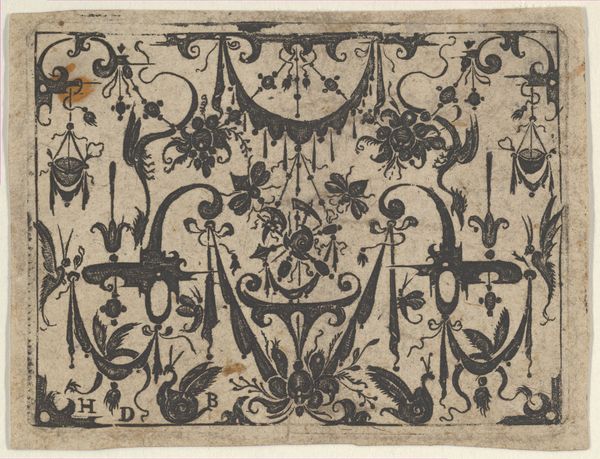
drawing, print, intaglio
#
drawing
#
baroque
# print
#
intaglio
#
figuration
#
line
#
decorative-art
Dimensions: sheet: 10 5/16 x 16 9/16 in. (26.2 x 42.1 cm)
Copyright: Public Domain
Editor: Here we have a 17th-century drawing called "Inlaid marble altar frontal". It looks like an intricate design in shades of pink and grey. I'm struck by the level of detail - all those swirls and floral patterns. It seems less like a drawing and more like a template or design to be implemented. What stands out to you about this piece? Curator: It’s precisely that "template" aspect which is key. It shows us the division of labor inherent in the creation of luxury goods like marble altar frontals. Look closely, it's an intaglio print, likely one of many guiding the hands of skilled marble workers, specifying cuts, inlays, and the placement of decorative elements. Editor: So, it wasn't necessarily intended as a standalone work of art? Curator: Exactly! Its artistic merit isn’t solely based on aesthetic innovation but is inextricably linked to its function within a system of production and consumption. Consider the economics behind it; marble was an expensive material, this print a means of ensuring precision and minimizing waste in its deployment, not to mention optimizing design transfer across workshops. What do you make of the choice of floral patterns and the cherub motif? Editor: I see them as decorations, they seem very of their time. They add elegance. Were there other factors, social factors involved in its making? Curator: Absolutely. Religious patronage was a major force driving the creation of these ornate altars. This drawing embodies that confluence of piety, wealth, and skilled craft. This represents not only someone’s devotion but it shows also social currency and status through ostentatious consumption and, furthermore, reveals labor hierarchies, from designer to printer, stonemason to priest. Editor: I didn't think about all those connections before. It's like peeling back layers to understand its place in society. I’ll definitely be thinking about artistic production very differently. Curator: Indeed! By focusing on materials, method and labor, we move away from purely aesthetic judgements, and get closer to appreciating this design as part of complex processes of cultural production and exchange.
Comments
No comments
Be the first to comment and join the conversation on the ultimate creative platform.
